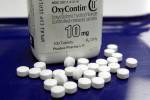New faces of heroin addiction require our attention
To learn about the latest twist in the story of heroin addiction in America, you needn’t read headlines about a Hollywood star’s fatal overdose or his “tragic final days.”
Just check your medicine cabinet. A clue might be found right there on the shelf.
Although the recent suspected overdose death of Academy Award-winning actor Philip Seymour Hoffman has been chronicled at great length in the press, a far greater tragedy has received relatively little notice in the media. It’s the deadly link between the epidemic abuse of synthetic opiate painkillers such as OxyContin and their connection to a substantial increase in heroin abuse, addiction and death.
By reputation, heroin addiction has been a malady that plays out with little fanfare in poor neighborhoods. Although movie stars make news when they kill themselves, generations of inner city youth have been exposed to similar dangers without many tears shed.
But the face of heroin addiction is changing as more of society finds itself battling painkiller dependency. Addiction to such synthetic opiates as OxyContin, a brand name for a morphine-like drug prescribed for severe pain, has created a new kind of heroin addict.
Left untreated, painkiller dependency creates the need for ever-larger quantities of the medication. With increased scrutiny of physicians for over-prescribing the drug, oxy addicts have begun to turn to heroin. It’s cheaper, narcotics detectives say, and it can be easier to obtain.
Ailee Burnett has spent seven years as a Metro narcotics detective. Burnett is part of a crew that works all street drugs, and she calls the oxy-heroin link undeniable.
“Whenever I talk about heroin addiction, I have to talk about pill addiction,” Burnett says. “It’s the main reason why we have a huge increase in heroin addiction and abuse.”
An increase? Prescription painkiller abuse has become an American pastime.
Don’t take the detective’s word for it. Just flip on a television: It’s a pill-popping society. Unlike illicit drugs, prescription painkillers are approved by a physician, federally regulated and covered by your insurance. What could be more legitimate?
The road to heroin addiction for many people often starts with raiding the family medicine cabinet, the detective says. Patients recovering from surgery often are over-prescribed medication. Painkillers pack a wallop, are socially acceptable and are also easy to resell.
The typical heroin addict’s neighborhood has changed, too, Burnett says. Gone are the days most addicts were found in ghettos. In Southern Nevada, they’re as likely to be found in Summerlin as the slums.
How do detectives know?
Once a heroin dealer is identified, it’s a fairly simple matter of following him on his rounds. Users need product on a daily basis. While some dealers still sell off street corners and out of careworn apartments, many make deliveries throughout the day in upscale neighborhoods.
“It’s really affecting a more diverse group of people than it was before, and it’s due to prescription drug abuse,” she says. “You find people who have education, live in affluent homes, people who were law-biding citizens.”
Addicts she interviews tell similar stories. Some began using painkillers after surgery. Others tried them as party drugs or after lifting them from the medicine cabinet.
Doctor shopping and falsifying prescriptions are common occurrences. Eventually, the tolerance levels build, and the addiction is greater than the pills available.
“The majority of the people who do talk to me about how they got started, it’s all been with pills — especially the young people,” she says. “I’ve spoken with 15-year-olds and 16-year-olds who started with oxies they got from a friend, then they eventually started using heroin. This is a 16-year-old kid.”
The detective recalls another addict, one she calls a “typical soccer mom, a stay-at-home mom who took great care of her kids.”
When soccer mom injured her back, she received a prescription for pain medication and took it as the doctor ordered. When the pills weren’t enough and the doctor had second thoughts about prescribing more, she turned to a cheaper alternative: heroin.
Although the news was abuzz with word of Hoffman’s death, Burnett says soccer mom didn’t make a single headline.
With so much at stake, maybe it’s time she did.
John L. Smith’s column appears Sunday, Tuesday, Wednesday and Friday. E-mail him at jsmith@reviewjournal.com or call 702-383-0295.





















